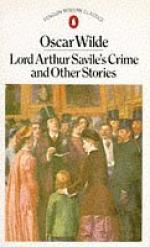|
This section contains 1,914 words (approx. 7 pages at 300 words per page) |

|
SOURCE: Dryden, Linda. “Oscar Wilde: Gothic Ironies and Terrible Dualities.” In The Modern Gothic and Literary Doubles: Stevenson, Wilde and Wells, pp. 110-14. Hampshire, England: Palgrave MacMillan, 2003.
In the following excerpt, Dryden explores Wilde's synthesis of social satire and the Gothic conventions in “The Canterville Ghost” and “Lord Arthur Savile's Crime.”
A horror one dare not express.
—Arthur Machen, The Great God Pan
In The Picture of Dorian Gray Oscar Wilde wrote a tale that synthesized Gothic conventions like the magic picture, duality and physical mutability. In some of his later stories he added a comic irony to the Gothic mode that he had explored in Dorian Gray, and thus lampooned the traditions he had used to such effect in the novel. Wolfreys argues that the ‘gothic is to be found everywhere … but never as itself, never in the same form twice’ (Wolfreys, 11). Wilde's Gothic satires prove Wolfreys's...
|
This section contains 1,914 words (approx. 7 pages at 300 words per page) |

|


